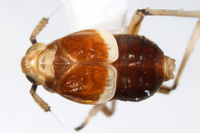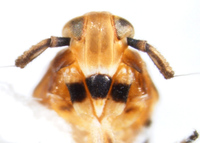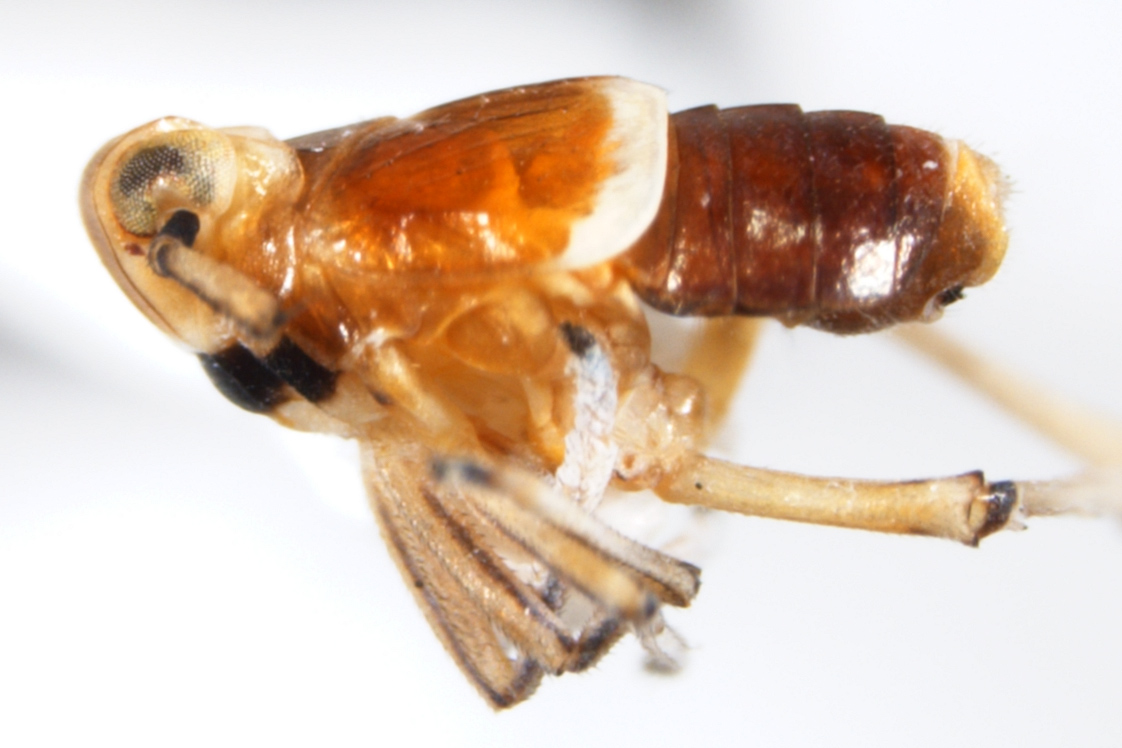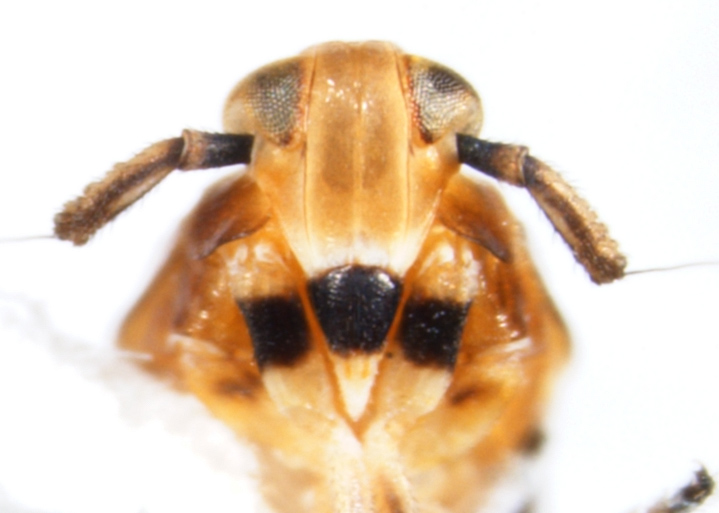
|
|
|
| synonym |
|
| description |
A variable species, ranging in color from orange to nearly black. For brachypterous individuals, the tips of the wings are white; otherwise, the body is mostly the same color. There is a black band across the clypeus on the face. The first antennal segment is black, and there is a black line across the front of the second antennal segment; there also black lines on the front of the legs. Macropterous individuals have clear wings but otherwise the same pattern and colors at brachypters, though typically on the darker side. Adult brachypterous males are around 1.97 mm long, while females are around 2.45 mm; macropterous males are around 3.39 mm long while females are around 3.47 mm. (Bartlett & Deitz, 2000) |
| distribution |
Primarily a Western species where it is widespread, but also recorded across much of the eastern United States; also Canada, Mexico, and maybe Jamaica (UDEL) |
| abundance |
Recorded from several counties in the Piedmont and mountains. |
| seasonal_occurrence | |
| habitat |
Reported to be a component of pinelands in southern temperate decidious forests. Likely to be found in grassy areas. (Bartlett & Deitz, 2000) |
| plant associates |
Grindelia squarrosa (Curlycup gumweed); Grindelia papposa; reported (but not confirmed) from many other hosts as well (Bartlett & Deitz, 2000) |
| behavior |
|
| comments |
This species is the most frequently collected Pissonotus north of Mexico (Bartlett & Deitz, 2000)
This species is very similar to P. binotatus and can only reliably be distinguished by genitalia, though macropterous individuals are slightly larger than binotatus (see measurements for both species). However, binotatus is the much more common and expected species in North Carolina. Macropterous individuals of delicatus could also be confused with P. brunneus macrotpers. However, brunneus lacks the black line on the second antennal segment (segment is pale) and delicatus tends to be quite shiny while brunneus is more dull colored. |
status |
[Native:]
[Introduced:]
[Extirpated:] | | list_type |
[Official:]
[Provisional:] |
| adult_id | Unmistakable and widely known Identifiable from good quality photos of unworn specimens
Identifiable from photos showing undersides, or other specialized views [e.g., legs, face]
Identifiable only by close inspection of structural features or by DNA analysis NULL |
| nymph_id | Unmistakable and widely known Identifiable from good quality photos, especially where associated with known host plants
Identifiable from close inspection of specimens or by DNA analysis
Identifiable only through rearing to adulthood NULL |
| G_rank |
|
| S_rank |
|
| rank_comments |
|
| tribe |
Delphacini |
| subgenus |
|
Species Photo Gallery for Pissonotus delicatus No Common Name |
 | Photo by: unknown
Out Of State Co.
Comment: collection info incomplete; date unknownrnmalernphotos provided by C.R. Bartlett |  | Photo by: unknown
Out Of State Co.
Comment: collection info incomplete; date unknownrnmalernphotos provided by C.R. Bartlett |
 | Photo by: unknown
Out Of State Co.
Comment: collection info incomplete; date unknownrnmalernphotos provided by C.R. Bartlett |

 »
»



 »
»

